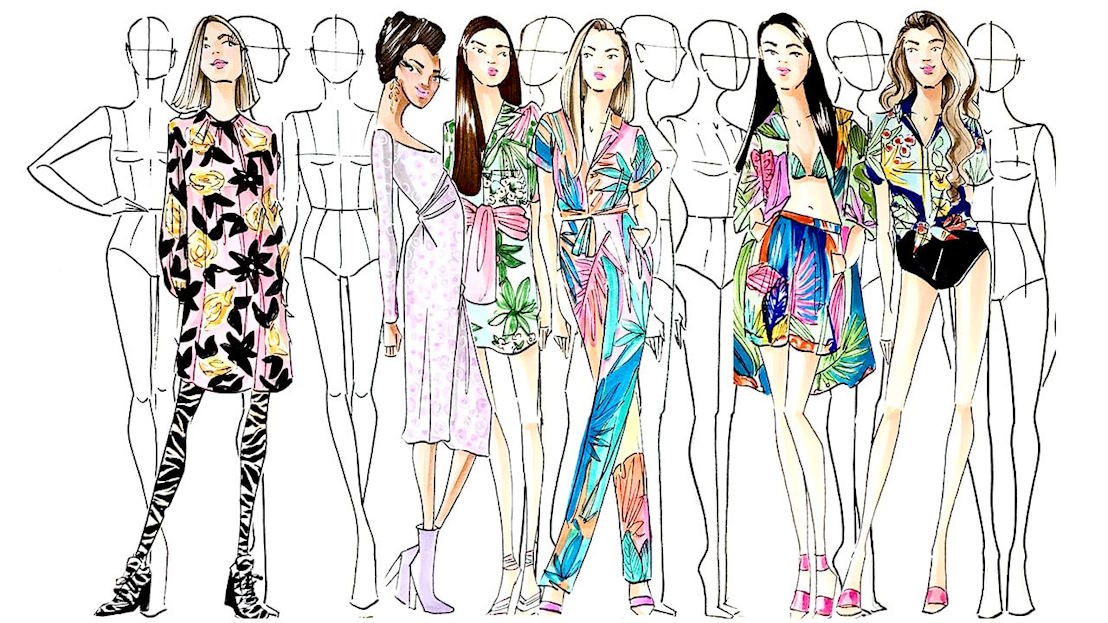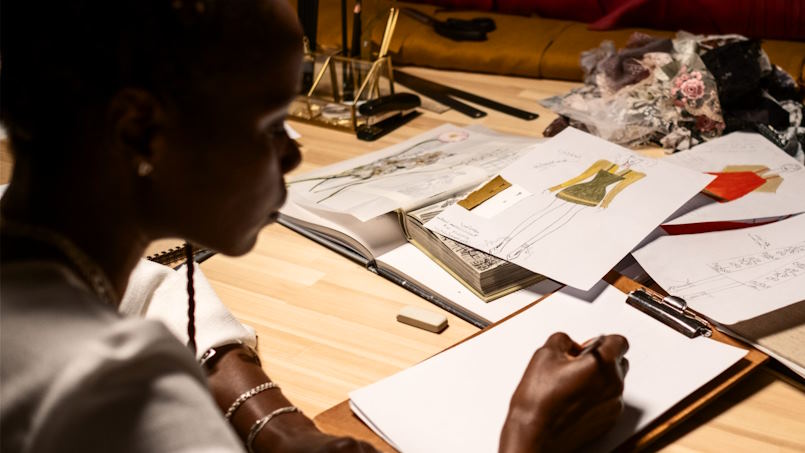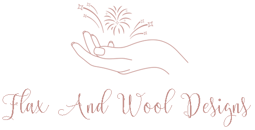Fashion illustration serves as the pulsating heartbeat behind the glamorous facade of the fashion industry, breathing life into the dreams and visions of designers. Beyond the runway and glossy pages of magazines, it is the intricate art of translating creative concepts onto paper that propels fashion from imagination to reality.
Fundamental Techniques
In the realm of fashion illustration, mastering fundamental techniques is akin to wielding a magic wand that brings designs to life on paper. Gesture drawing, the art of capturing movement in swift and dynamic strokes, is the heartbeat of fashion sketches. It’s about distilling the essence of a pose, freezing a moment, and infusing vitality into the fabric and form. A skillful gesture drawing communicates the rhythm and energy of a design, offering a tantalizing glimpse into the garment’s potential on a living, breathing runway.
Understanding proportions and anatomy is the backbone of any impactful fashion illustration. It’s the meticulous study of the human form that empowers illustrators to breathe authenticity into their sketches. Whether it’s the elongation of a model’s limbs or the delicate curve of a neckline, precision in proportions ensures that the envisioned design harmonizes seamlessly with the body it’s meant to adorn.

Color and Texture in Fashion Illustration
Color and texture are the dynamic duo that elevates fashion illustration from mere sketches to vibrant visual narratives. The introduction of color in fashion illustration is a symphony of hues that breathe life into designs, evoking emotions and setting the tone for the envisioned aesthetic. It’s the palette chosen that transforms a casual outfit sketch into a statement piece, allowing designers and illustrators to convey the mood and personality of their creations.
Moving beyond the flatness of lines, incorporating texture and fabric details becomes the next frontier in achieving a realistic representation. It’s the meticulous rendering of lace’s delicacy or the luxurious drape of silk that adds depth and tactile richness to the illustration. Texture becomes the silent storyteller, whispering tales of craftsmanship and materiality, making the design tangible even on a two-dimensional canvas.
In the kaleidoscope of fashion illustration, exploring different coloring techniques becomes an art form in itself. From the traditional strokes of watercolor that lend a soft, ethereal quality to illustrations, to the precision and versatility offered by digital methods, each technique contributes to the unique character of the artwork. The choice of coloring method becomes a stylistic signature, allowing illustrators to experiment, innovate, and carve out their niche in the ever-evolving world of fashion illustration.

Fashion Illustration for Different Purposes
Fashion illustration is a versatile art form that adapts its strokes and nuances to serve various purposes within the expansive realm of the fashion industry.
Runway sketches for fashion shows form the heartbeat of a designer’s vision, offering a sneak peek into the choreography of fabric and form. These illustrations are dynamic, capturing the essence of movement and showcasing how designs come to life on the runway. They serve as the preliminary glimpse that sets the stage for the grand unveiling of a collection, providing a tantalizing preview for fashion enthusiasts and industry insiders alike.
In the glossy pages of magazines and on the digital landscapes of online publications, editorial illustrations take center stage. These illustrations go beyond showcasing designs; they tell a visual story. Whether gracing the pages of a high-fashion magazine or an online editorial, these illustrations complement the written narrative, adding a layer of artistic expression to the fashion discourse.
For designers crafting their personal portfolios, fashion illustration becomes a deeply personal and curated showcase of their creative prowess. These illustrations transcend the practicalities of runway or editorial demands, becoming a visual manifesto of a designer’s aesthetic journey. Personal portfolio illustrations are a glimpse into the soul of the designer, offering a curated selection that speaks volumes about their unique style, influences, and aspirations in the ever-evolving tapestry of fashion.


